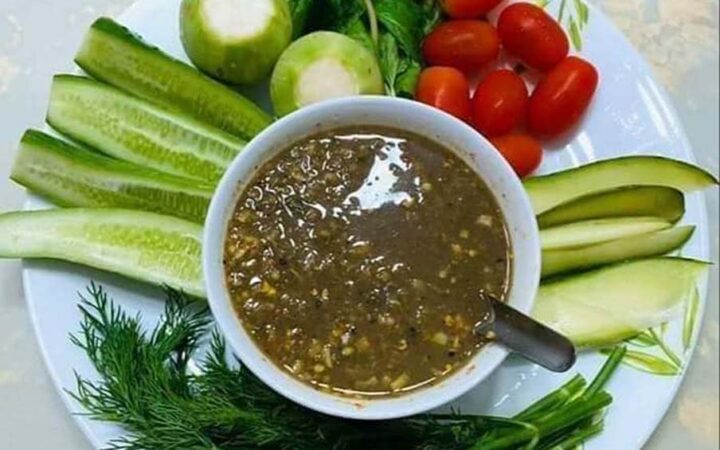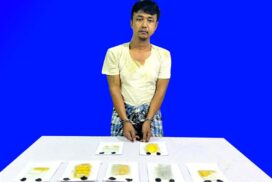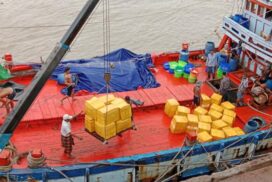Ngapi (fish paste), a Myanmar side dish meal served deliciously with fresh vegetables, is a popular fermented condiment to complement Myanmar cuisine. Ngapi has been commonly consumed and highly demanded by people of all ages from the past generations. Moreover, ready-made fish paste with good packaging and value addition is delivered to foreign countries to satisfy the cravings of Myanmar citizens abroad.
Making the process of Ngapi
Ngapi is made from mixing fish such as butter catfish, Mystus vittatus, swamp barb, small snake-headed fish, catfish and snakehead murrel. There are two types of fermented fish: small fish and large fish Ngapi. Its taste differs from fish ingredients. Fish paste is a taste to Myanmar people.
“Ngapi can be made on your own. After salting and drying fish under the sun for two days, it is pounded to a certain extent. Some ferment them with rice water or broken rice soup to get thicker liquid. They are fermented in glass bottles, plastic jars and earthen pots. If it’s not mixed with rice water, Ngapi sauce looks thin,” Daw Tin Aye, a Ngapi maker working on a manageable scale in Pantanaw Township, Ayeyawady Region, told the Global New Light of Myanmar.
Commercial fish paste processing businesses utilize a glazed earthen pot with a capacity of a hundred visses of fish, placing a glazed earthen bowl at the bottom. Desmodium triquetrum leaves cover the top of the lid to kill blowfly larvae. “Salting and pounding fish are important steps in fermenting fish to enrich the flavour of Ngapi. If the fish is not pounded well, the taste is not rich. Fermentation duration takes five months at least to get delicious Ngapi”, Daw Tin Aye explained. The Ngapi-making process varies depending on the region. It’s primarily found in coastal areas and delta regions.
Bizarre case of Ngapi fermentation
Ngapi pot is overfilled during high tide, even if the location is far from the coastal area. The pot is dry during the waning days of the month. During the waxing days of the month (high tide), the pot is refilled with fish sauce after collecting them. The clear liquid at the top of the Ngapi pot is called fish sauce from the pot (locally called O tat Ngan Pyar Yay).
Fermented fish paste and its nutritional value
Myanmar people love eating boiled Ngapi with fresh and assorted vegetables. Ngapi is rich in water, protein, vitamins and minerals such as calcium, phosphor, copper, potassium and zinc. It contains 40-50 per cent of water content, 20-30 per cent of protein and 3-4 per cent of fat. The salt content in fish and shrimp paste is 10-25 per cent, while fish sauce and salted fish have a high salt content of 20-30 per cent. Thanks to protein and fat, 31-48 calories are found in Ngapi. This being so, it gives one nutrition like a slice of meat like mutton, beef and pork. Ngapi consists of 1.5-2.5 per cent of calcium and 0.75-1.25 per cent of phosphorus. “Children are fed a plate of rice mixed with fish paste as the adults consider Ngapi contributes to strengthening bone. Because of its nutritional value, some people feed Ngapi to the children. It is like receiving child nutrition from low-cost Ngapi,” Ma Thanda Swe, a mother of a five-year-old child, told The Global New Light of Myanmar.
Value-added Myanmar’s Ngapi penetrating export market
Myanmar’s fisheries businesses are commonly found in coastal areas and delta regions. Value-added fish paste, shrimp paste, fish sauce, dried fish, dried shrimp and ready-made canned fish paste (Ngapi) are shipped worldwide. Many value-added and diversified fish products are placed on external markets to meet consumer demand.
Translated by EM
Ngapi made from Myanmar fish enriches taste of Myanmar meal with nutritional values
- January 07, 2024
- 571














